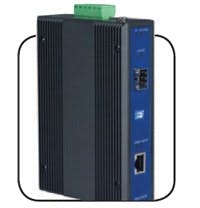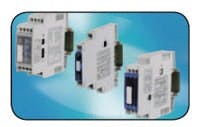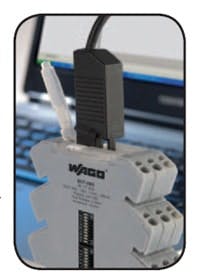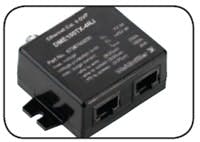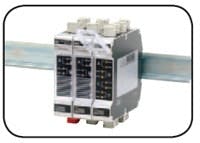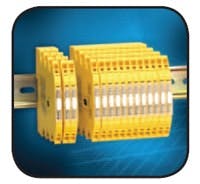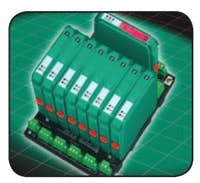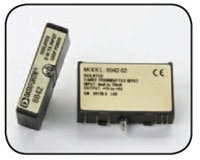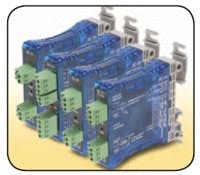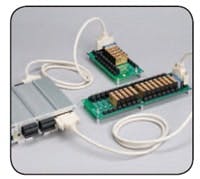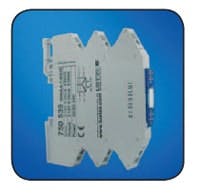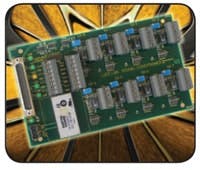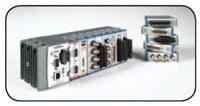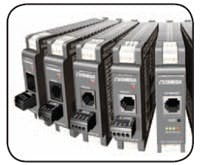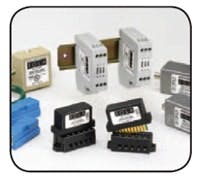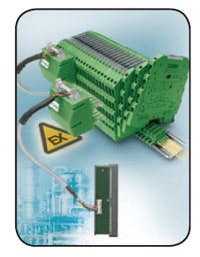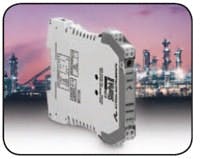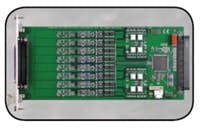Speed is important in processing sensor/transmitter output signals, but speed alone doesn’t necessarily give you the good signal controller input you need to ensure proper operation. Truly valid measurements are achieved sometimes only when you apply isolation and signal conditioning, but separation and protection are always a good place to start.
“For a plant to work reliably year-in and year-out, the protection of analog and digital signaling through good installation practice is a high priority,” says Alan Balcombe, global product engineering manager at Weidmüller Application Center NAFTA. “Apart from the basics of cable separation, grounding and shielding, the foundations for this protection are in high-quality signal isolation, conversion and surge protection.”
Michael Manning, vice president of engineering, Automation Systems Interconnect, suggests selecting a modular device that’s programmable. “A universal programmable signal conditioning device allows engineers to easily configure the unit to fit most applications. This gives engineers the ability to reduce inventory and cost by standardizing on one part number,” he says.
“Network engineers need to consider the performance goals and failure mode effects of their signal conditioning,” says Don Lupo, sales & marketing director at Acromag. The failure mode effect on the system means asking what happens if the sensor fails or the input/output/power wires break open or short, he explains.
“Is the signal conditioner software configurable, as well as DIP switch configurable with zero/span capabilities?” asks Tracy Lenz, senior product engineer at Wago. “Simplify by finding models that can be configured from multiple sources for multiple signal types.” This eliminates ordering wrong part numbers and minimizes on-hand stock, explains Lenz.
“Physics have not changed galvanic isolation needs, and analog signals are all around us,” says R. Coregsey, system engineer at Lutze. “We have to deal with them now and in the future.”
When relying on accurate analog signals from outdoor applications, such as wastewater plants, think about the possibility of electrical noise and interference that could affect the system, warns Mark Dietzsch, product manager at Turck. “By incorporating signal conditioners that utilize galvanic isolation, which eliminates noise and interference, the chance of disruptions to the control circuits is greatly reduced,” he explains.
Any good design inherently rejects as much noise as possible, declares Helge Hornis, Ph.D., manager, intelligent systems, at Pepperl+Fuchs. “For data networks this is typically accomplished by utilizing symmetrically designed electronics and floating signals, possibly combined with shielding,” he explains.
Signal conditioners have benefited from advances in circuit design technology, says George Tsakir, process and fluid power product manager, AutomationDirect. “They are smaller yet offer advance features such as one-touch calibration based on incoming signals and DIP-switch settable input and output ranges.”
If you’ve had problems on past applications, you probably experienced signal crosstalk, common-mode voltages, DC or AC common-mode rejection or over-range and input protection issues, explains Bill McGovern, national sales manager at Dataforth, who emphasizes all of these nightmares can be eliminated with isolated analog signal conditioners.
ETHERNET-TO-FIBEROPTICEKI-2741 converts Gigabit Ethernet networks to Gigabit fiber networks by transparently converting Ethernet signals to optic signals. It acts as a solution for applications that require wide bandwidth, EMI immunity and long-distance transmission capability. The switch supports MD/MDIX auto detection, so users don’t need to use crossover wires. Surge protection is 3,000 Vdc.Advantech, Industrial Automation Group513/742-8895
SURGE PROTECTIONCat. 5 surge protection modules connect via RJ45 sockets to protect all signal lines. They are suitable for 10BaseTx and 100BaseTx. Rated for 5 Vac, the surge protection devices have a response time of ≤5 nsec.Weidmüller800/849-9343
POWER HUBFieldConnex KLD2-PC-1.1.IEC Fieldbus power conditioning modules condition standard 24 Vdc supplies for fieldbus networks. They can supply up to 1 A of current to the connected field devices. They also provide the necessary impedance matching circuitry for IEC 61158-2 based networks (Foundation fieldbus, Profibus-PA).Pepperl+Fuchs330/486-0002
ANALOG SIGNAL INTERFACEES2151 and ES2152 combination analog input/output models interface 16 dc current inputs, 16 voltage inputs and either 16 current or voltage output signals to Ethernet-enabled input signals from a rack of 8B signal conditioning modules through a DB25 port to monitor a variety of sensors, including temperature, frequency and load cells. Acromag248/295-0880
SIMPLIFY FPGASuite of software and hardware intellectual property makes using field-programmable gate arrays (FPGAs) in measurement, control and signal processing applications easier. FPGA IPNet provides an open forum for sharing LabView FPGA IP and new hardware I/O modules for analog and digital I/O, communication buses/protocols and motion control.National Instruments 888/280-7645
REDUCE WIRING TIMEAnalog system adapter for MINI MCR isolators and connectors is designed to reduce wiring time. Users plug in the system cables directly from the analog isolators or converters and into the controllers, reducing wiring and human error. The adapters have a wide range of certifications and can be used in Ex Zone 2 environments.Phoenix Contact800/888-7388
Continue Reading

Leaders relevant to this article:

